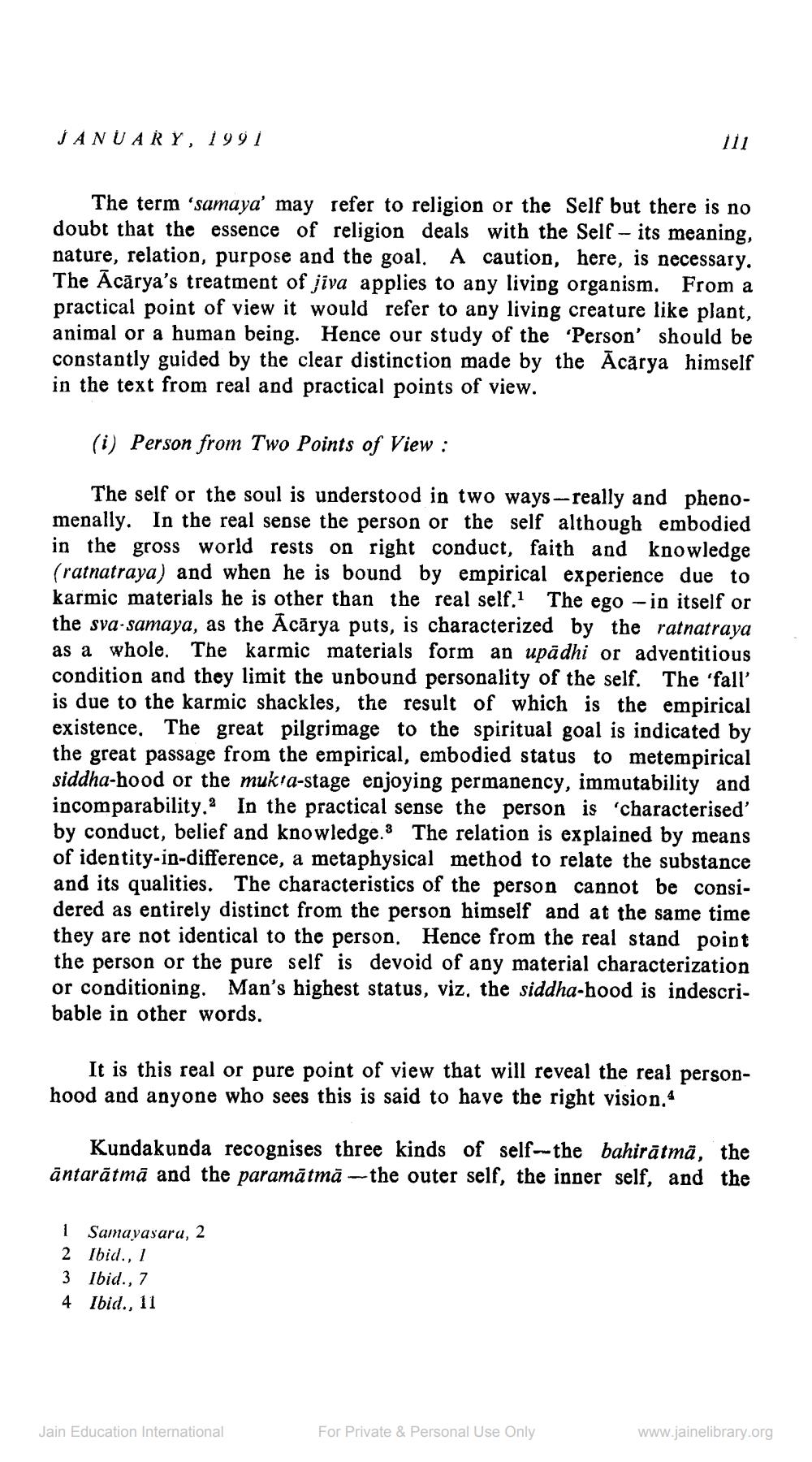________________
Í ANUARY, 1991
The term 'samaya' may refer to religion or the Self but there is no doubt that the essence of religion deals with the Self - its meaning, nature, relation, purpose and the goal. A caution, here, is necessary. The Ācārya's treatment of jiva applies to any living organism. From a practical point of view it would refer to any living creature like plant, animal or a human being. Hence our study of the Person' should be constantly guided by the clear distinction made by the Ācārya himself in the text from real and practical points of view.
(i) Person from Two Points of View :
The self or the soul is understood in two ways --really and phenomenally. In the real sense the person or the self although embodied in the gross world rests on right conduct, faith and knowledge (ratnatraya) and when he is bound by empirical experience due to karmic materials he is other than the real self. The ego - in itself or the sva-samaya, as the Acārya puts, is characterized by the ratnatraya as a whole. The karmic materials form an upādhi or adventitious condition and they limit the unbound personality of the self. The 'fall' is due to the karmic shackles, the result of which is the empirical existence. The great pilgrimage to the spiritual goal is indicated by the great passage from the empirical, embodied status to metempirical siddha-hood or the mukta-stage enjoying permanency, immutability and incomparability. In the practical sense the person is characterised' by conduct, belief and knowledge. The relation is explained by means of identity-in-difference, a metaphysical method to relate the substance and its qualities. The characteristics of the person cannot be considered as entirely distinct from the person himself and at the same time they are not identical to the person. Hence from the real stand point the person or the pure self is devoid of any material characterization or conditioning. Man's highest status, viz, the siddha-hood is indescribable in other words.
It is this real or pure point of view that will reveal the real personhood and anyone who sees this is said to have the right vision.4
Kundakunda recognises three kinds of self--the bahirātmā, the āntarātmā and the paramātmā —the outer self, the inner self, and the
1 Samavasara, 2 2 Ibid., 1 3 Ibid., 7 4 Ibid., 11
Jain Education International
For Private & Personal Use Only
www.jainelibrary.org




